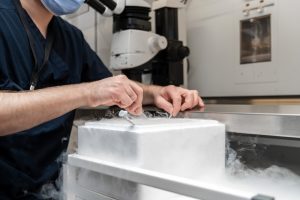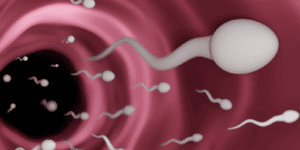A new approach by scientists at Kyoto University, published in Cell Genomics, promises a breakthrough in contraception and the treatment of male infertility. The study, led by Professor Jun Suzuki of the Institute of Integrated Cell Material Science (iCeMS), fills a critical gap by directly targeting genes in testicular cells within living organisms.
Using a genetic tool called CRISPR, which can be compared to genetic scissors, the researchers developed a method to study which genes contribute to healthy sperm production in living animals. Until now, this has mainly been done on cells grown in the laboratory. The researchers randomly disrupted genes by developing a method to introduce a collection of genetic tools in the form of lentiviruses into testicular cells with high efficiency. Using this method, the researchers were able to analyze the effects of targeted genes on certain biochemical reactions in the sperm, such as the movement of lipids (fats) in the cell membranes.
The Advantages of the New Screening Method With Regard to Male Fertility
With this method, the team focused on sperm with defective capacitation, a process by which sperm become capable of fertilizing an egg. They identified these sperm by measuring how much calcium they absorbed. By using this method in live animals, they were able to identify a specific gene, Rd3, which is crucial for maintaining sperm health, especially during sperm development. Although Rd3 was previously associated with the function of the eye, the team found that it is also highly active in round spermatozoa, an early stage of sperm production, and plays an important role in regulating sperm health. This discovery was made possible by studying how Rd3 interacts with mitochondria, structures responsible for energy production in cells.
To better understand the function of Rd3, Suzuki and his colleagues developed the Hub Explorer, a computerized tool that revealed the influence of Rd3 on the regulation of oxidative stress – a condition associated with cell damage. The role of Rd3 in regulating oxidative stress revealed its importance in maintaining sperm integrity during development.
While there are many birth control options available to women, the choice for men is still limited. This new screening method is promising as it contributes to the discovery of key molecules that may lead to new contraceptive methods and infertility therapies for men. According to the researchers, these discoveries not only advance our understanding of sperm development, but also show the potential to uncover secrets in various biological processes. The method can also be applied to other tissues, which could speed up the development of drugs for a variety of diseases.
Despite this progress, there are still some challenges. The researchers observed a gradual decline in the number of cells with targeted genes, suggesting opportunities for improvement. They are currently exploring alternative approaches to improve the effectiveness of their technique and plan to use it to study different biological processes and diseases in other areas of the body.





